Inclusive design is a discipline that aims to create spaces that can be used by everyone, regardless of their physical, cognitive or sensorial abilities. This approach to design not only promotes equality and inclusivity, but also improves the quality of life of all the people who use these spaces. A key aspect of inclusive design is the choice of materials, which can significantly impact the accessibility and usability of the environments.
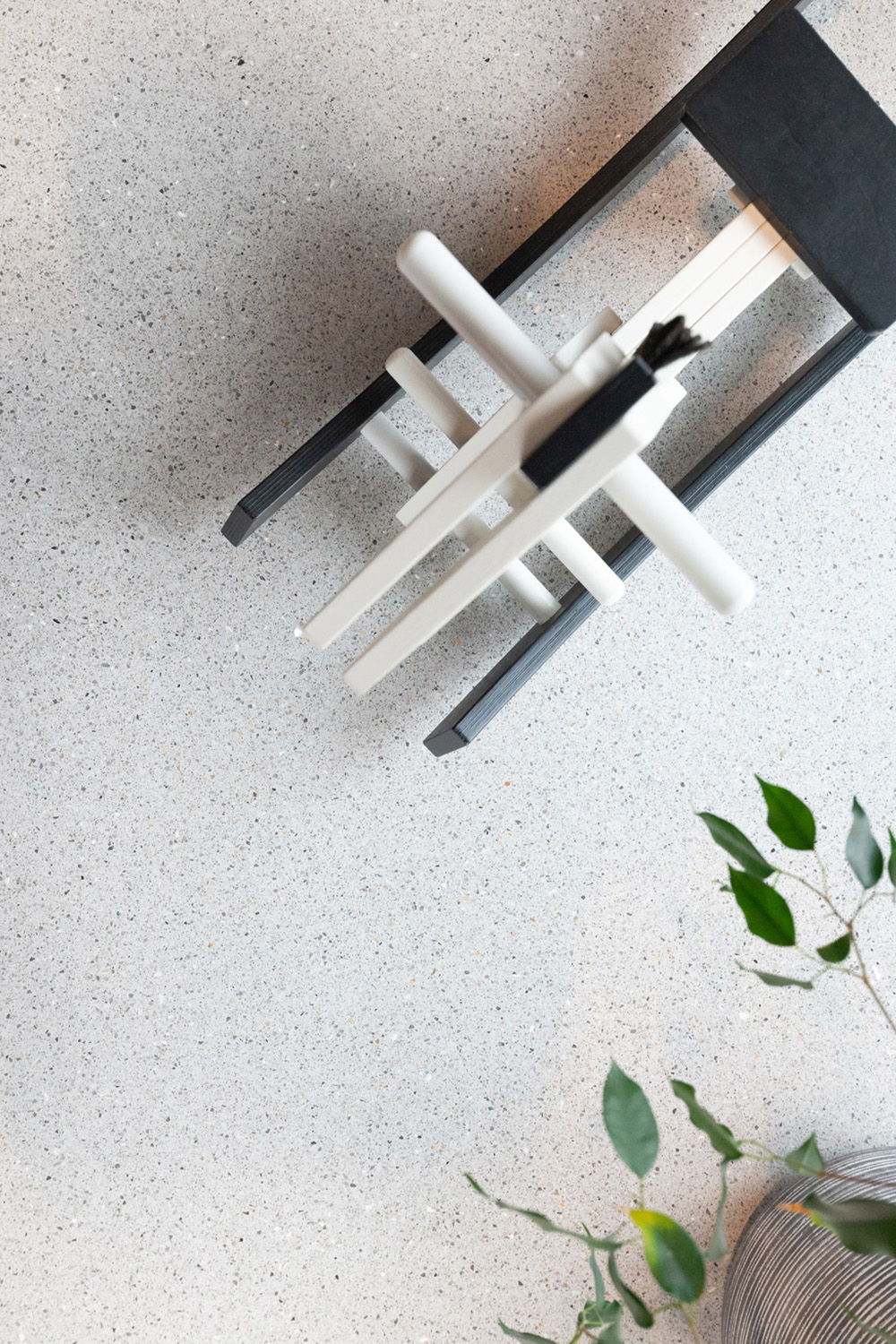
What is inclusive design?
Inclusive design is a design approach that aims to make environments accessible to all people, without the need for special adaptations. This type of design takes into account a wide range of needs and abilities, seeking to eliminate physical and cognitive barriers that may impede access and use of spaces.
The Importance of Materials in Inclusive Design
The choice of materials can contribute to the opportunity to create inclusive spaces.
Materials should be chosen not only for their aesthetic qualities, but also for their functional properties that contribute to accessibility and safety. Here are some criteria to consider.
1. Safety
Safety is a priority in inclusive design. Materials must be slip-resistant, fire-resistant, and non-toxic. For example, for flooring, it is important to choose materials that reduce the risk of slips and falls, especially in areas prone to moisture such as bathrooms and kitchens.
2. Maintenance
Materials should be easy to clean and maintain. Easy-to-clean surfaces not only improve hygiene, but also reduce the risk of allergies and infections. Durable, long-lasting materials reduce the need for frequent replacement or repairs, while facilitating continuous access.
3. Visual contrast
To help people with visual impairments, it is important that materials offer good colour contrast with the surrounding environment. For example, floors and walls with contrasting colours can help to better define spaces and help navigation.
4. Acoustics
Sound-absorbing materials can be essential for people with hearing loss. Floors and walls with sound-absorbing properties can reduce echoes and background noise, making environments more comfortable for those with hearing loss.
5. Tactility
Tactile surfaces can help people with visual impairments to better navigate a space. For example, floors with different textures can indicate changes in area or the presence of obstacles.
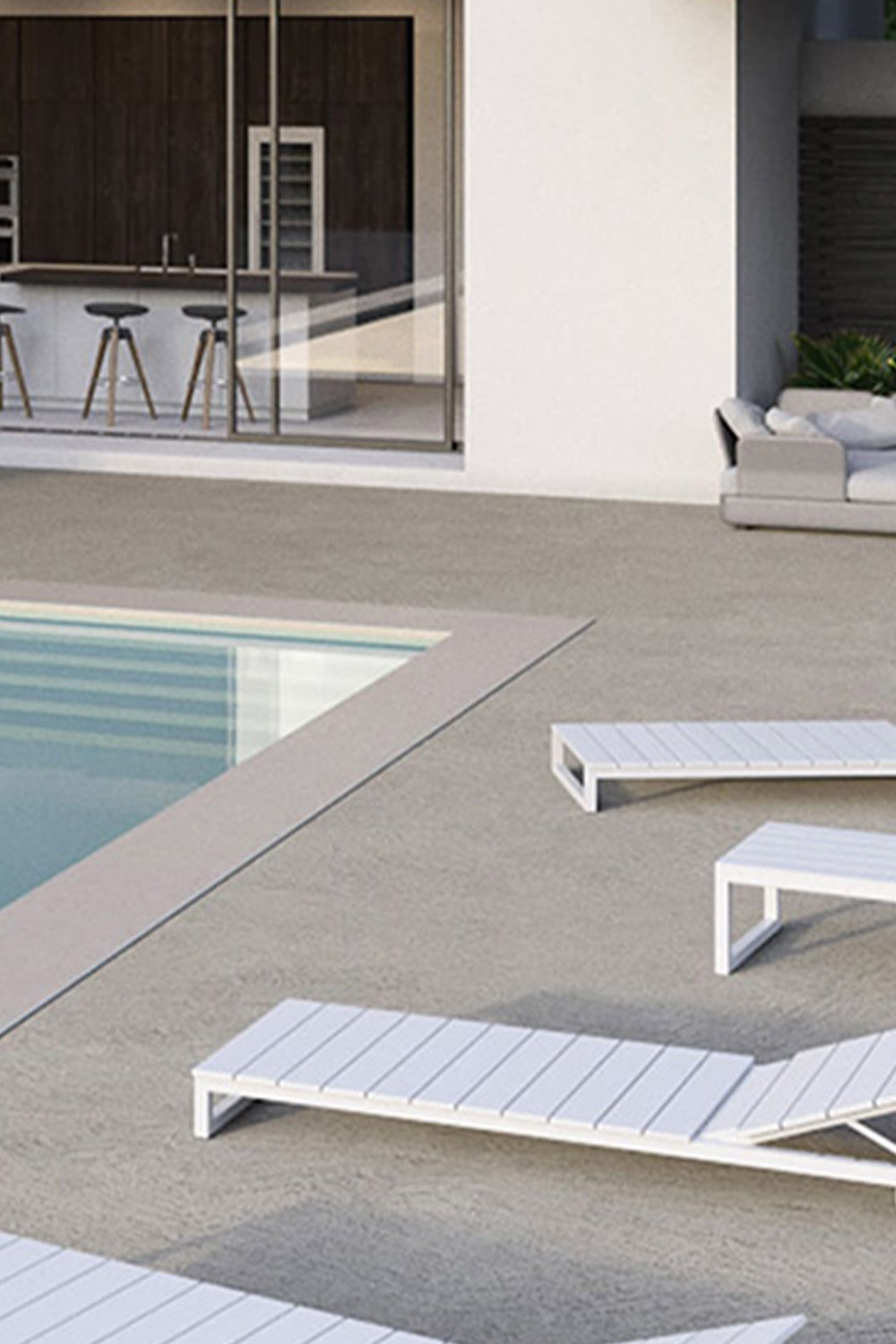
Floors suitable for an inclusive design
Floors are a key element in inclusive design. Choosing the right materials can make a big difference in the accessibility of a space.
Seamless, slip-resistant materials
Continuous surfaces, without joints or gaps, reduce the risk of tripping and facilitate mobility, especially for those who use wheelchairs or walking aids.
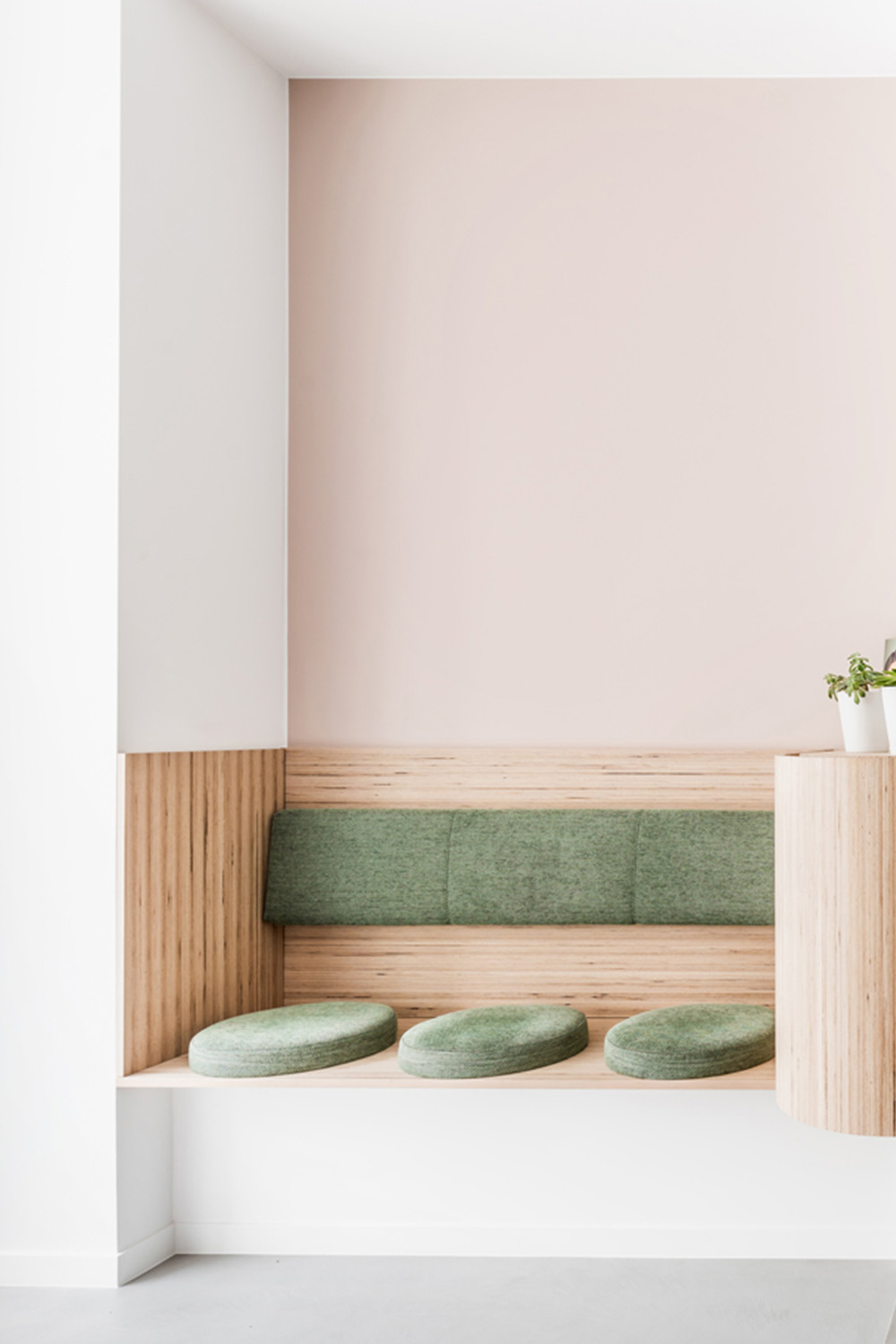
Inclusive wall coverings
Wall coverings also play an important role in inclusive design. Here are some materials that can improve the accessibility of interior spaces.
Lime-based paints and coatings
Lime paints are eco-friendly, breathable and mould-resistant. Lime also has natural antibacterial properties, which makes surfaces more hygienic. Furthermore, lime can be applied in different thicknesses and finishes, offering great flexibility in creating tactile textures.

Sound-absorbing panels
Acoustic panels can improve the acoustics of a space by reducing background noise and improving the clarity of sound. They are especially useful in spaces such as offices, classrooms and meeting rooms.
A careful choice
Inclusive design requires a careful choice of materials to ensure that spaces are accessible, safe and comfortable for all. Floors and coverings must be chosen not (or at least not only) for their aesthetics, but also for their functional properties that improve accessibility. Non-slip, easy-to-maintain materials with good visual contrast, sound-absorbing properties and tactile textures are essential to create inclusive environments. Investing in inclusive design not only responds to regulatory needs, but also promotes the well-being and dignity of all people who use these spaces.
Floorings for an inclusive design
Ideal Work offers several solutions that perfectly meet the criteria for inclusiveness so far described.

Microtopping
Microtopping is an innovative coating based on cement and liquid polymers. It is particularly suitable for inclusive floorings thanks to its various advantages:
– Seamless surface: The lack of joints and gaps reduces the risk of tripping and facilitates mobility, especially for people with motor disabilities.
– Custom possibilities: Microtopping finishes are available in in different textures and colours, allowing for broad custom opportunities that include the creation of visual contrasts to improve orientation.
– Resistance and durability: This material is extremely wear-resistant and easy to maintain, ensuring long-term safety and hygiene.
– Slip-resistance: With the appropriate treatments, Microtopping can become non-slip, increasing the safety of humid environments such as bathrooms and kitchens.
– Flexibility of application: It can be applied over existing surfaces, which makes it a versatile solution for accessibility-focused renovations.
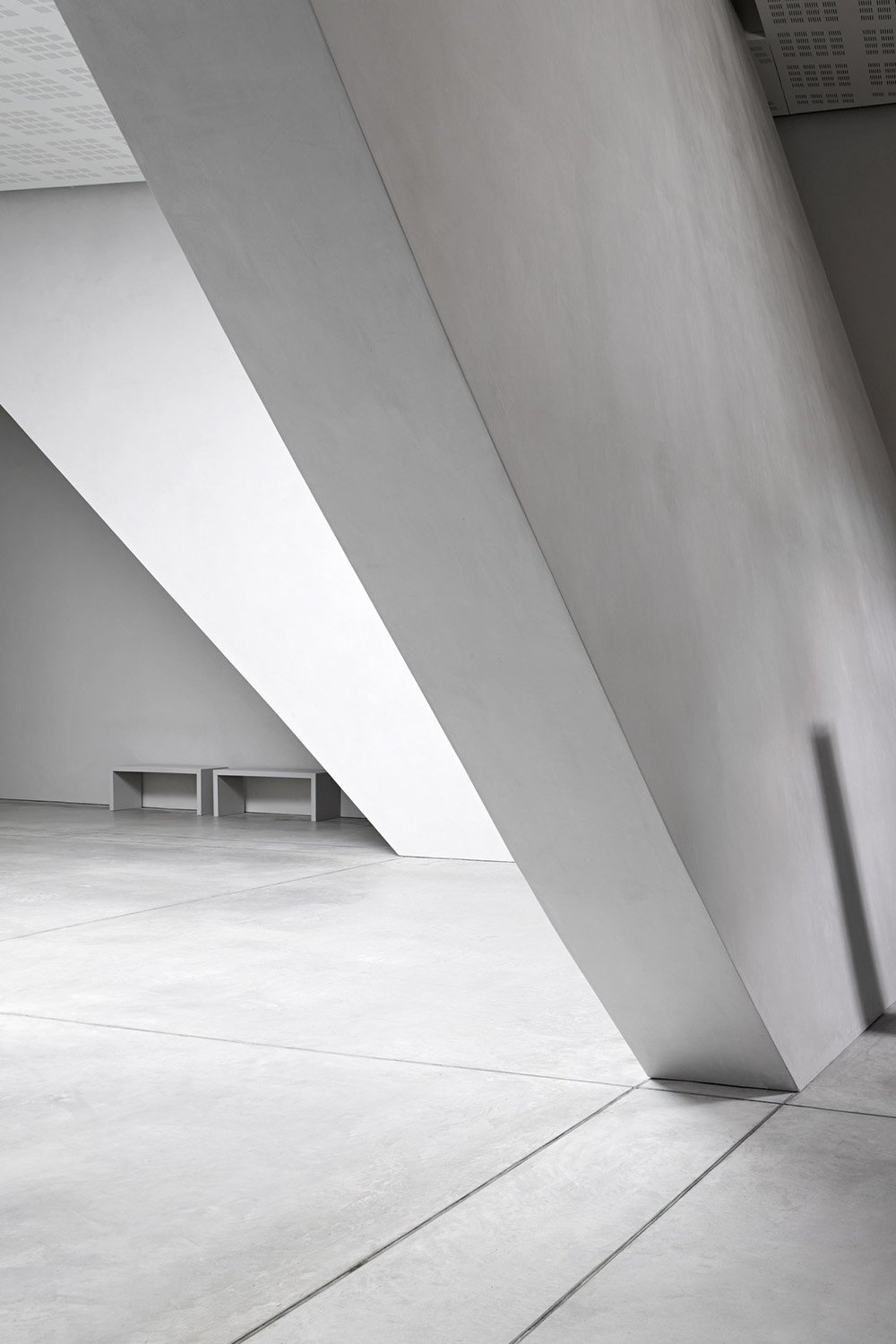
Nuvolato Architop
Nuvolato Architop is another flooring solution that meets the criteria for inclusive environments.
– Contemporary look: Nuvolato Architop offers a modern and refined look, available in various finishes and colours that can be used to create visual contrasts useful for people with visual impairments.
– Seamless surface: Like Microtopping, Nuvolato Architop provides continuous surfaces without joints, reducing the risk of tripping and facilitating mobility.

Lixio
Lixio is a floor finish enriched by marble aggregates that combines tradition and modernity. Yet another suitable solution to create inclusive environments.
– Elegant aesthetic: Lixio allows you to create elegant floors available in a wide range of colours and textures that can be combined so as to create visual contrasts.
– Polished surface: Lixio’s smooth, seamless surface is ideal for the mobility of people with motor disabilities and for the use of wheelchairs.
– Durability: Flooring solutions made of a combination of concrete and marble aggregates are extremely wear-resistant and easy to maintain, ensuring longevity and safety.
Wall coatings
Even wall coverings can come to our aid for an inclusive design. Here we explain how some of the solutions offered by Ideal Work can improve the accessibility of interior spaces.

Terrae Calce Matera
Terrae Calce Matera is a lime-based coating that combines tradition and innovation.
– Natural and sustainable: Natural lime is eco-friendly and free of toxic substances, contributing to the creation of healthier and safer environments for everyone.
– Breathable: Lime’s breathability helps regulate humidity, preventing mould growth and improving indoor air quality.
– Aesthetic versatility: Available in different finishes and colours, Matera allows you to create visual contrasts and tactile textures, improving accessibility for people with visual and tactile impairments.
– Easy maintenance: It is resistant and easy to clean, guaranteeing hygienic and safe surfaces that last over time.
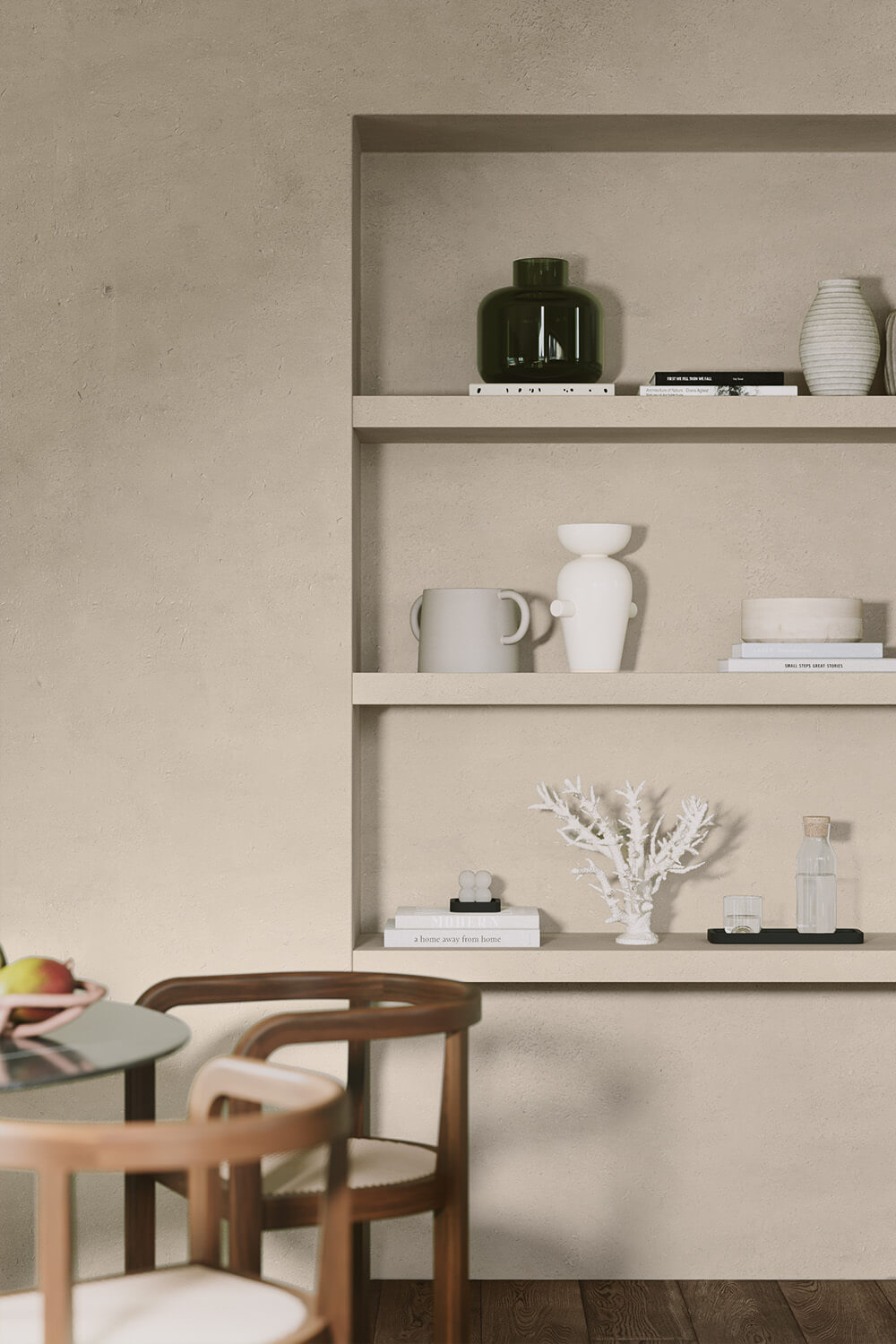
Terrae Calce Siena
Terrae Calce Siena is a versatile solution that comes with multiple advantages.
– Customisable textures: Siena is available in different textures, allowing the creation of tactile surfaces that help people with visual impairments to better orient themselves.
– Colour contrast: Colour options allow to create visual contrasts that facilitate orientation and improve safety.
– Antibacterial properties: lime has natural antibacterial properties which help to keep environments clean and healthy.

Terrae Calce Venezia
Terrae Calce Venezia is an elegant and practical solution.
– Refined look: Venezia allows to obtain finishes of great aesthetic value, with a vast range of colours and textures able to create welcoming and visually unique environments.
– Smooth, seamless surface: smooth, continuous surfaces are easy to clean and maintain, reducing physical barriers and improving accessibility.
– Breathable properties: Like other lime-based coatings, Venezia is breathable and helps maintain a healthy, mould-free environment.
It doesn’t take much to imagine an inclusive design that helps people live better in environments regardless of any limitations or problems. Ideal Work tries to satisfy high aesthetic criteria that also contribute to promoting accessibility and inclusiveness for all people.